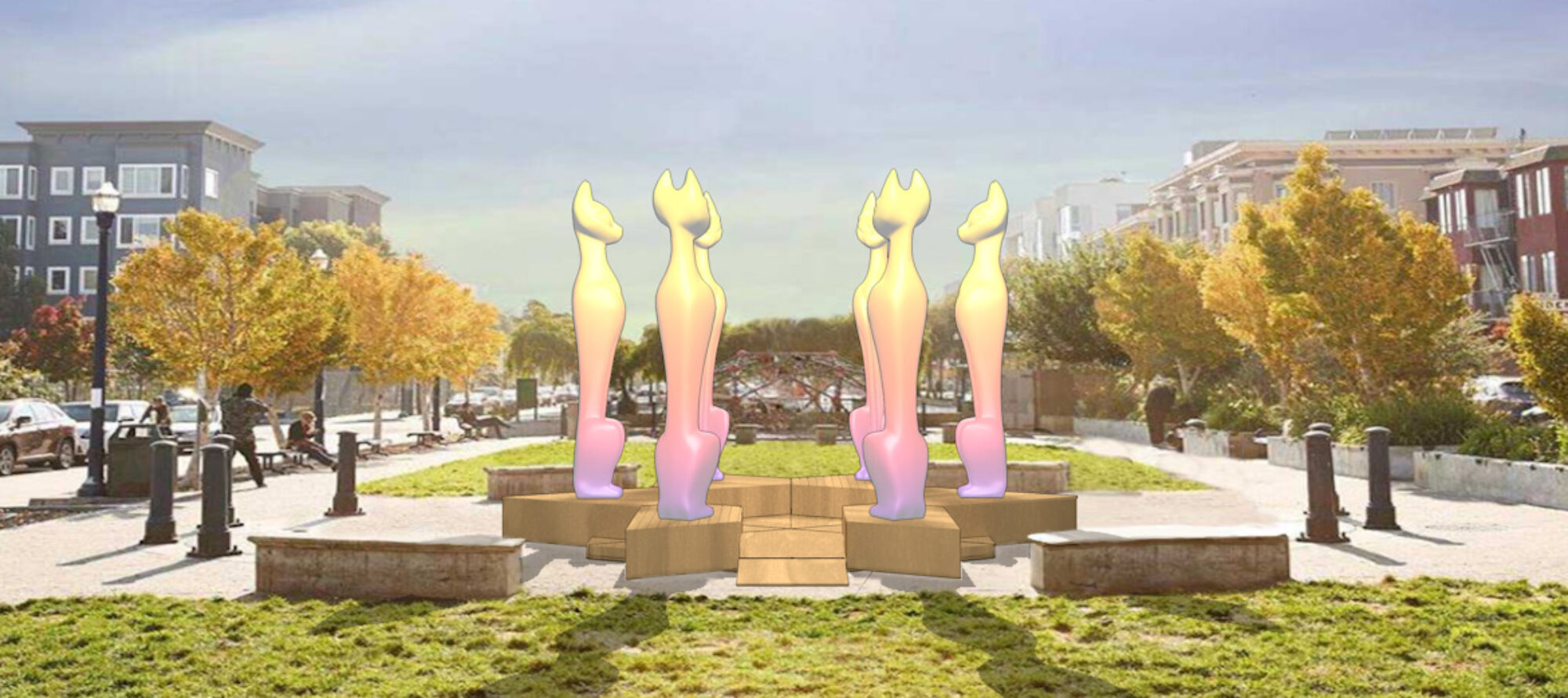
It’s only natural that cats should have kittens, and plastic cat statues should therefore have their progeny too. The Coven of Catoliths gave birth to a Litter of Kittoliths.
After 5 years of design and production I feel that the Catolith is at last nearing its potential. The newly refurbished Catoliths that were just installed at KALW with their LiDAR based interactivity, battery operation, independent control via Raspberry Pi computer, and lighter more mobile wooden base actually exceed what I imagined for this artwork 5 years ago.
Below is a table showing the progression of techniques from one iteration of Cathenge to the next.
| Component | New Catolith (2024) | Kittolith System (2023-24) | Catolith System (Patricia’s Green 2022) | Catolith System (BMan 2019) |
|---|---|---|---|---|
| Interactivity | LiDAR (“Time of Flight”), Raspberry Pi | LiDAR (“Time of Flight”), Raspberry Pi | Passive Infrared | Capacitive Sensing by Theremin Barney |
| Purring | Solfeggio Tone Based | Solfeggio Tone Based | Purr Data interactive composition by Jacob Tonski | Purr Tones by No.e |
| 3D Printing | PETG/CR-10 S-5 Self-Printed | PETG/CR-10 S-5 Self-Printed | PETG/CR-10 S-5 Self-Printed | PLA by Titanic Design |
| 3D Modeling | “Voxel Modeling” for 2-ply model with “shiplap” joints. | “Voxel Modeling” for 2-ply model with “shiplap” joints. | “Voxel Modeling” for 2-ply model with “shiplap” joints. | No joining system! |
| Base | Wooden Base | Wooden Base | Concrete Base | Concrete Base |
| Sound | Transductive Speakers/Inverted Sub Mounted in the Base | Transductive Speakers/Inverted Sub Mounted in the Base | Transductive Speakers/Bazooka Sub | Car Audio Stuff |
The Vision of Cathenge
From the beginning, the vision of Cathenge and of the Catolith Cat Statue has been exceedingly difficult to realize because it combines lighting effects and interactivity in very specific ways and is dependent on the large format 3D printing to achieve. However, each installation of Cathenge succeeded in communicating this vision in different ways, but never completely to my satisfaction, and that’s why I have continued working on the project.
The goal has been to express the concept of “Holofelinity: Universal Cat Consciousness”. Holofelinity is the magical power of the Ancient Lyran Space Cats to manifest their minds over matter and to transform themselves into any shape. This is expressed in the artwork as “Harmonic Purring” (AKA; “Purrbration of Holofelinity”), an evocation of the capacity of the Space Cats to purr their visions into material form.

The Kittolith
In order to reach this goal, it was instrumental to create a smaller version of the Catolith, the “Kittolith”:

Because the Kittolith presents as a single statue instead of a circle of statues (as in Cathenge) it has been necessary to condense the interactive harmonic purring system into one sculpture. This has been done using LiDAR. People interact with the LiDAR beam extending from the collar of the Kittolith and trigger different frequencies (“Solfeggio Tones”). The infographic below shows how the Kittolith works with the use of Solfeggio sound healing tones:

From Kittolith to Catolith
The “Kittolith Interactive Sound System” (KISS) was adapted for use in the Catolith. The photo gallery below documents our process of creating the New Catolith. Essential to this process was the design and construction of a new wooden base for the Catolith.

This new, lighter base not only facilitates a wider range of possibilities of exhibitions because of its much reduced weight (compared to the previous concrete bases), but also resolves acoustic issues since the wooden base acts as a ported speaker cabinet for the subwoofer installed in the base. Below is a gallery of photos of the new Catolith and its new base under construction:








